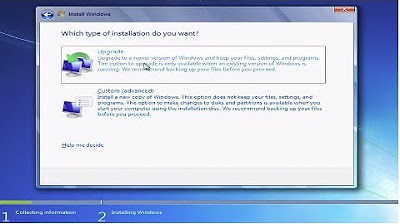Nexon EV MAX 7.2 KW Fast Charger vs Regular Charger and Tips
Summary
TLDRIn this video, Ranit discusses the installation of a 7.2 kW fast charger for his EV and compares it with a regular 3.3 kW charger. He explains the difference between AC and DC fast chargers, clarifies misconceptions, and demonstrates the charging process. Ranit also shares his driving experience, average range, and charging time, emphasizing the importance of slow charging for battery health.
Takeaways
- ⚡ The speaker recently installed a 7.2 kW fast charger and is now testing it for the first time.
- 🔋 Until now, the speaker has been using a 3.3 kW charger, which is typically an overnight charger that fully charges the car by morning.
- 🚗 The speaker clarifies that the 7.2 kW charger is not a true DC fast charger, which usually starts at 25 kW and can go up to 50 kW.
- 🛣️ The Nexon EV Max supports up to 50 kW DC fast charging, with older models supporting up to 25 kW.
- 🔌 The car currently shows 52% battery with a range of 182 km. The speaker switches from the 3.3 kW to the 7.2 kW charger to check performance.
- 🟢 The 7.2 kW charger has reduced the charging time from 8 hours (on the 3.3 kW) to 3 hours for a full charge.
- 🏠 The 7.2 kW charger runs on a single-phase connection, though it requires a high-load meter, at least 10 kW capacity.
- 🔒 The charger has an RFID authentication system, preventing unauthorized use, and the charging starts once authenticated.
- ⏳ The speaker notes that while the 7.2 kW charger improves charging time, it's not essential if you're charging the car overnight.
- 💡 The speaker advises not to frequently use DC fast charging as it can degrade battery health; alternating with slow AC charging helps in battery conditioning.
Q & A
What type of charger is the speaker referring to as a 'fast charger'?
-The speaker is referring to a 7.2 kW AC charger as a 'fast charger,' though technically, it is not a true fast charger. Fast chargers are usually DC fast chargers with power ratings of 25 kW or 50 kW.
What is the typical time taken to charge the Nexon EV using the 3.3 kW charger?
-Using the 3.3 kW charger, the speaker mentions that it takes around 8 hours to fully charge the Nexon EV.
What is the difference in charging time between the 3.3 kW charger and the 7.2 kW charger?
-The 3.3 kW charger takes around 8 hours to charge the battery, while the 7.2 kW charger reduces the charging time to about 3 hours.
Why does the speaker prefer driving in 'City mode' rather than 'Eco mode'?
-The speaker prefers 'City mode' because it provides a better balance between pickup and energy efficiency. In 'Eco mode,' the instant pickup is reduced, which the speaker doesn't like.
How does the RFID tag system work with the 7.2 kW charger?
-The RFID tag system is a security feature that authenticates the charging process. The user needs to tap the RFID tag on the charger to start and stop charging, preventing unauthorized use.
Is the 7.2 kW charger a DC or AC charger?
-The 7.2 kW charger is an AC charger, not a DC fast charger.
What capacity does the speaker say the car pulls when charging with the 7.2 kW charger?
-The speaker mentions that the car pulls a maximum of 6.8 kW when charging with the 7.2 kW charger, and it uses up to 30 amps of current.
What does the speaker recommend regarding the use of DC fast charging?
-The speaker recommends not using DC fast charging all the time. After every three or four fast charging sessions, it is advisable to do one regular slow charge with an AC charger to maintain the health of the battery.
What load capacity does the speaker recommend for using a 7.2 kW charger?
-The speaker recommends having at least a 10 kW or higher load capacity in the electricity meter for using a 7.2 kW charger. The speaker has a 40 kW load, which is more than sufficient.
How does the speaker monitor the charging process with the 7.2 kW charger?
-The speaker monitors the charging process using the lights on the charger. A blinking green light indicates that the car is charging, and a blue light confirms that the system is ready to charge.
Outlines

Esta sección está disponible solo para usuarios con suscripción. Por favor, mejora tu plan para acceder a esta parte.
Mejorar ahoraMindmap

Esta sección está disponible solo para usuarios con suscripción. Por favor, mejora tu plan para acceder a esta parte.
Mejorar ahoraKeywords

Esta sección está disponible solo para usuarios con suscripción. Por favor, mejora tu plan para acceder a esta parte.
Mejorar ahoraHighlights

Esta sección está disponible solo para usuarios con suscripción. Por favor, mejora tu plan para acceder a esta parte.
Mejorar ahoraTranscripts

Esta sección está disponible solo para usuarios con suscripción. Por favor, mejora tu plan para acceder a esta parte.
Mejorar ahoraVer Más Videos Relacionados

Nothing Phone (2a) Review | The Almost Practical Smartphone

Windows 7 Installation Guide: ISO Download & USB Boot Tutorial

Beginilah Cara Install Windows 7 Di Virtualbox Terbaru 2023

Don’t let this happen In your Mid 30’s or 40's & How I Recovered

How to Install Windows 7 From a CD or DVD Tutorial Guide Walkthrough

CARA SETTING BIOS PADA MOTHERBOARD VARRO H61+INSTALL WINDOWS
5.0 / 5 (0 votes)
